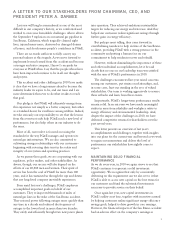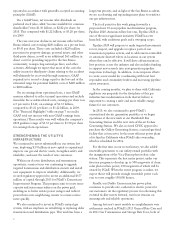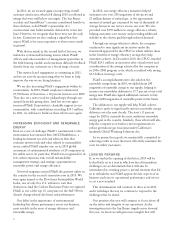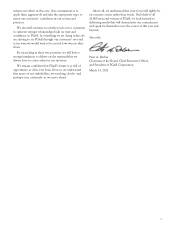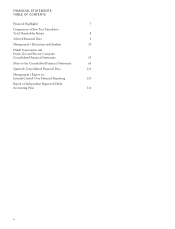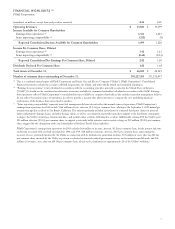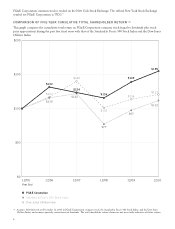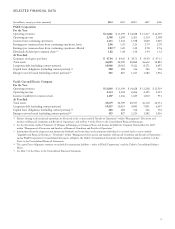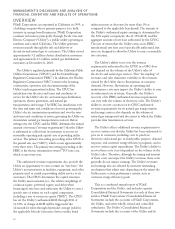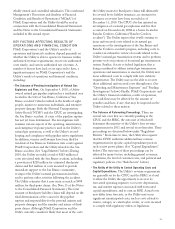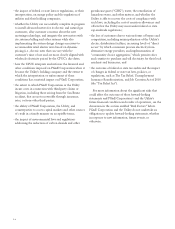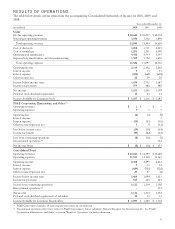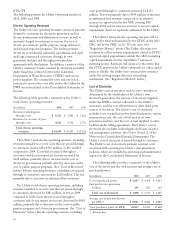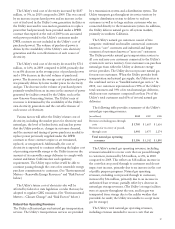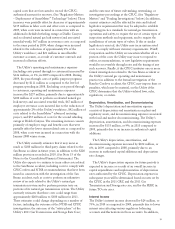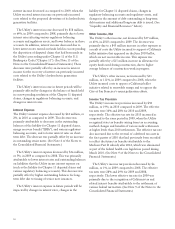PG&E 2010 Annual Report Download - page 14
Download and view the complete annual report
Please find page 14 of the 2010 PG&E annual report below. You can navigate through the pages in the report by either clicking on the pages listed below, or by using the keyword search tool below to find specific information within the annual report.MANAGEMENT’S DISCUSSION AND ANALYSIS OF
FINANCIAL CONDITION AND RESULTS OF OPERATIONS
OVERVIEW
PG&E Corporation, incorporated in California in 1995, is
a holding company whose primary purpose is to hold
interests in energy-based businesses. PG&E Corporation
conducts its business principally through Pacific Gas and
Electric Company (“Utility”), a public utility operating in
northern and central California. The Utility generates
revenues mainly through the sale and delivery of
electricity and natural gas to customers. The Utility served
approximately 5.2 million electric distribution customers
and approximately 4.3 million natural gas distribution
customers at December 31, 2010.
The Utility is regulated primarily by the California Public
Utilities Commission (“CPUC”) and the Federal Energy
Regulatory Commission (“FERC”). In addition, the Nuclear
Regulatory Commission (“NRC”) oversees the licensing,
construction, operation, and decommissioning of the
Utility’s nuclear generation facilities. The CPUC has
jurisdiction over the rates and terms and conditions of
service for the Utility’s electric and natural gas distribution
operations, electric generation, and natural gas
transportation and storage. The FERC has jurisdiction over
the rates and terms and conditions of service governing the
Utility’s electric transmission operations and over the rates
and terms and conditions of service governing the Utility on
its interstate natural gas transportation contracts. Before
setting rates, the CPUC and the FERC determine the annual
amount of revenue (“revenue requirements”) that the Utility
is authorized to collect from its customers to recover its
reasonable operating and capital costs of providing utility
services. The primary rate-setting proceeding at the CPUC is
the general rate case (“GRC”), which occurs approximately
every three years. The primary rate-setting proceeding at the
FERC is the electric transmission owner (“TO”) rate case,
which occurs every year.
The authorized revenue requirements also provide the
Utility an opportunity to earn a return on “rate base,” the
Utility’s net investment in facilities, equipment, and other
property used or useful in providing utility service to its
customers. The CPUC determines the capital structure
the Utility must maintain (i.e., the relative weightings of
common equity, preferred equity, and debt) when
financing its rate base and authorizes the Utility to earn a
specific rate of return on each capital component,
including a rate of return on equity (“ROE”). The CPUC
has set the Utility’s authorized ROE through 2011 at
11.35%. A change in ROE will be triggered if the
12-month October-through-September average yield for
the applicable Moody’s Investors Service utility bond
index increases or decreases by more than 1% as
compared to the applicable benchmark. The amount of
the Utility’s authorized equity earnings is determined by
the 52% equity component, the 11.35% ROE, and the
aggregate amount of rate base authorized by the CPUC.
The rate of return that the Utility earns on its FERC-
jurisdictional rate base is not specifically authorized, but
rates are designed to allow the Utility to earn a reasonable
rate of return.
The Utility’s ability to recover the revenue
requirements authorized by the CPUC in a GRC does
not depend on the volume of the Utility’s sales of
electricity and natural gas services. This “decoupling” of
revenues and sales eliminates volatility in the revenues
earned by the Utility due to fluctuations in customer
demand. However, fluctuations in operating and
maintenance costs may impact the Utility’s ability to earn
its authorized rate of return. Generally, the Utility’s
recovery of its FERC-authorized revenue requirements
can vary with the volume of electricity sales. The Utility’s
ability to recover a portion of its CPUC-authorized
revenue requirements for its natural gas transportation
and storage services also depends on the volume of
natural gas transported and the extent to which the Utility
provides firm transmission services.
The Utility collects additional revenue requirements to
recover certain costs that the Utility has been authorized to
pass on to customers, including costs to purchase
electricity and natural gas; to fund public purpose, demand
response, and customer energy efficiency programs; and to
recover certain capital expenditures. The Utility’s ability to
recover these costs is not dependent on the volume of the
Utility’s sales. Therefore, although the timing and amount
of these costs can impact the Utility’s revenue, these costs
generally do not impact earnings. The Utility’s revenues
and earnings also are affected by incentive ratemaking
mechanisms that adjust rates depending on the extent the
Utility meets certain performance criteria, such as
customer energy efficiency goals.
This is a combined annual report of PG&E
Corporation and the Utility, and includes separate
Consolidated Financial Statements for each of these two
entities. PG&E Corporation’s Consolidated Financial
Statements include the accounts of PG&E Corporation,
the Utility, and other wholly owned and controlled
subsidiaries. The Utility’s Consolidated Financial
Statements include the accounts of the Utility and its
10



